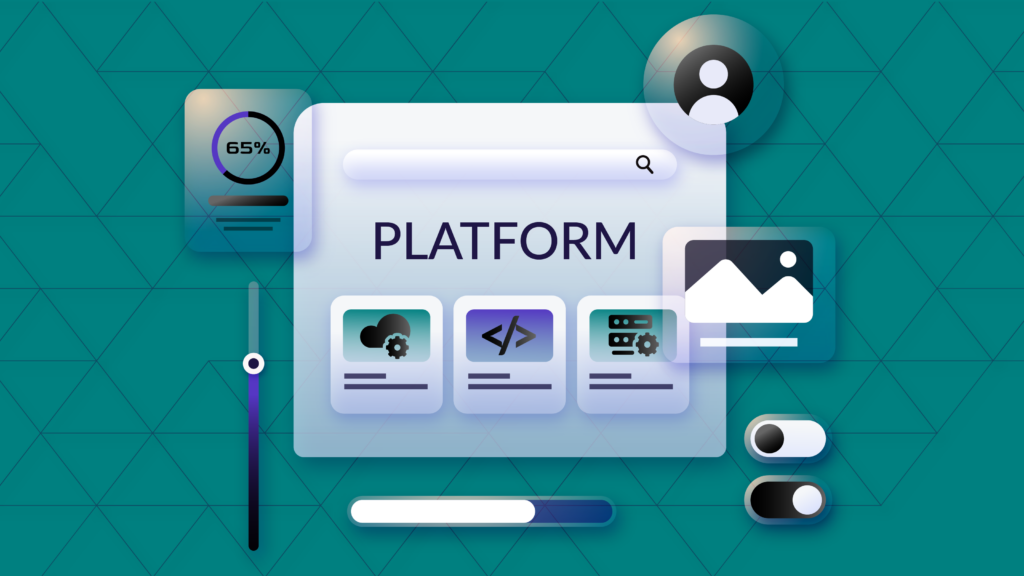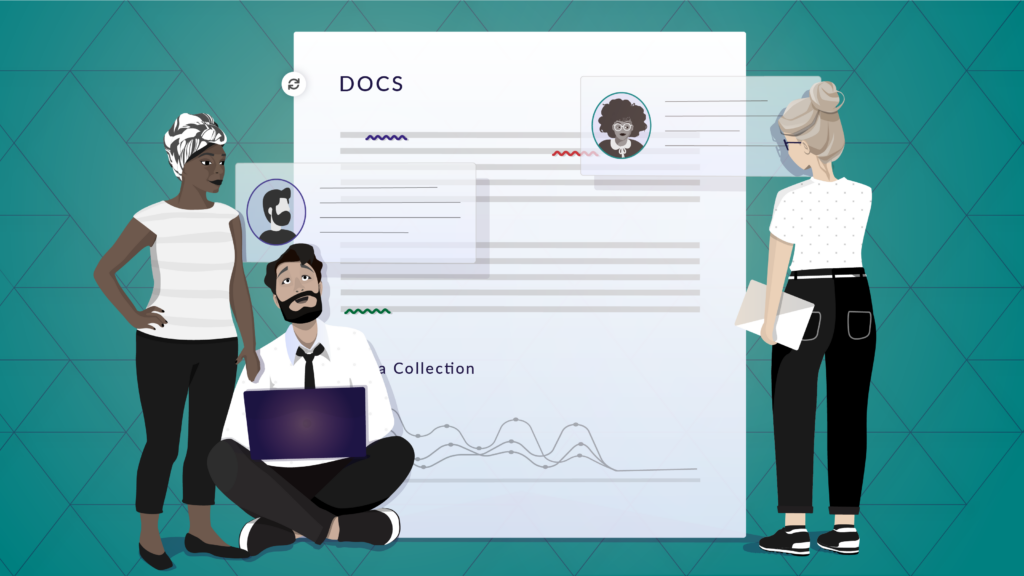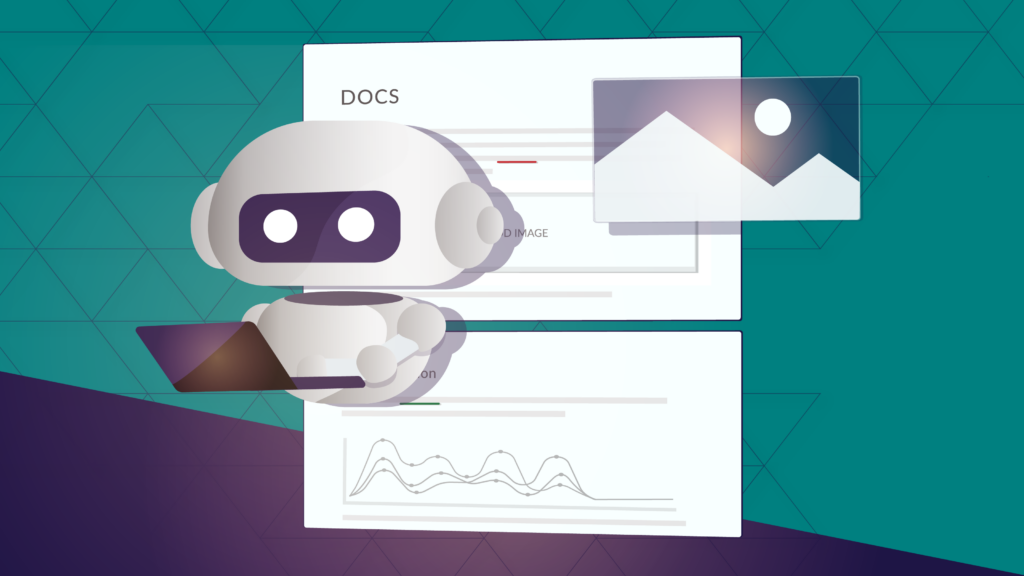Now that the thunder of the Fonto 8.0 release is starting to fade, it is time to turn our minds toward the future. As Forrester’s “The Future of Documents” report illustrates, the momentum for structured content is growing. While industries like aerospace and manufacturing are ahead of the curve, we see widespread adoption of structured content in other regulated industries such as life sciences, legal, standardization, and finance.
Fonto is the leading provider of structured-content authoring solutions. We enable anyone to create structured content—not in the least because of our strong partner network and our innovative customers. And we’re determined to keep it that way!
We’re proud and honored to present our roadmap for 2022 and beyond. Before going into the details, we want to share how we develop our products. Our roadmap has always been driven by direct customer involvement as depicted in the following diagram (cheesy we know, but hey, it’s effective):
At the top, we have our customers. They help us shape new features and test them before we ship a new release. Following the needs of our customers, we have our internal roadmap and certified processes to help us structure our work. Next are the three pillars of our roadmap: platform, collaboration & review, and document automation. We’ll take a look at each pillar in a moment. Finally, we have the Fontop0mp, which is our battle cry, the driving spirit behind the Fonto team, our foundation.
Platform
The first pillar is the platform. For us, this means helping our partners to be successful with their products and solutions. Our partners are our primary focus. The platform pillar includes the authoring experience, the SDK, and the quality of the overall Fonto platform.

In our 8.0 release, we invested significantly in the collaboration in our products by introducing the Balloons interface. We improved the Outline by making it more accessible, so you can find content faster. In 2022 we will continue to make Fonto an inclusive platform for all users. We’ll do this with smaller tweaks like improving color contrast as well as larger enablers like right-to-left support. We’ll also continue to invest in table authoring, including improving the experience when working with large tables.
From an SDK perspective, we made a leap forward with the introduction of TypeScript in the 8.0 release. We refactored a massive amount of our codebase and tools in order to get to that point. And now that we got that out of the way, we’ll focus on providing a richer API surface to allow customers to do more configuration in less time. Taking boilerplate code away is a priority as well as introducing higher-level abstractions to enable you to configure Fonto for your specific content model and requirements.
Performance, stability and security are key quality attributes that make Fonto a reliable and scalable platform. In these areas, we’ll do what we have been doing for the past eight years: make each better with every single release!
Collaboration & Review
The second pillar is collaboration and review. For us, this means collaborative authoring and scalable review of documents. Although the review is obviously a form of collaboration, it is helpful to talk about them separately to make them more concrete.

As documents are growing in both size and complexity, multiple authors are involved in the content-creation process more often than not. Our current visualization of other users is text-based, whether it is in the section lock information or in the comments. We want to make that process more personal by introducing profile pictures or avatars and other information necessary for effective collaboration. This improves the feeling of working with other human beings and improves recognition. Defining and assigning tasks, and involving others in discussions are other aspects of collaboration which we will cover in the document automation pillar.
Collaboration is not “just” between humans, as illustrated by Forrester’s prediction: “Robots will share the writing credits with humans.” With our Fonto Content Quality product, we’re bringing AI into the authoring process. Machine learning-based services will help write semantically enriched content without the overhead of manual tagging. Ensuring content is inline with master data management systems is a big part of this effort to guarantee consistency—not just between documents, but also between data and documents. Our focus will be to make it easier and faster for partners to integrate their technology into Fonto Content Quality.
Paper-based review cycles are slow, inefficient and error-prone. With Fonto Review, we provide an online, real-time content review solution. Some of our customers have hundreds of reviewers across the globe, producing thousands of comments. Enabling efficient addressing of all of these comments is a priority for us. This includes grouping into topics, detecting and handling duplicate comments, and tracking the progress of addressing all of these comments. Partial anonymization and public inquiry are key focuses as well to enable more people to be involved while protecting their personal information. Anonymization is crucial in a blind review in scientific publishing, for example.
Not all documents are authored from scratch. It is quite common that over the lifetime of a document, multiple revisions are created. Each of these revisions will need to be reviewed and approved. But wouldn’t it be helpful if you, as a reviewer, could see what has changed since the previous revision you saw? You could focus on the changes rather than redoing work that you did before. This is where the integration of Fonto Document History into Fonto Review comes into play. We will add the ability to show changes across an entire document and improve the visualization of the changes such that they’re easy to understand.
Document automation
The third and final pillar of our roadmap is documentation automation. To us, document automation means seamless integration of data into documents and documents into data. Consider for example a quarterly sales report. This document may contain a table with sales numbers as well as an interpretation of those numbers. The interpretation is written by an analyst, while the data likely comes from a financial reporting system.

But how does that data find its way into documents? More often than not, by means of copy and paste. But this method introduces a new problem: How do you guarantee the data is consistent? In regulated industries, this question is key. Whether it is about clinical trial reports or a description of a medical device, there is a need to make sure that documents and data are consistent with each other, otherwise, this will need to be caught by time-consuming review cycles.
Blending data into documents is the key to document automation. For us, this is separated into 3 categories: templates, data integration, and document comparison.
Templating
Providing authors with helpful templates saves time and increase compliance. A big part of creating effective templates is providing authors with tasks and instructions on how to perform these tasks. Tasks help in the division of labor; is it the clinical trial team that needs to write this section or is it the stability team? Instructions tell the author what to write and where to get the information from. Instructions may include examples or links to more detailed resources. Tasks also help in tracking progress. If all tasks are completed, the document is ready for review.
In the classic Word world, tasks and instructions are included in the document itself, often colour-coded to distinguish it from the actual content. They should be removed when published but oftentimes that is forgotten which then needs to be corrected. Even if that is not forgotten, what happens if an author needs to change something? The instructions are now gone, forcing the author to “guess” or look up the template manually.
In Fonto we can do much better. With structured content, we have a clear distinction in the underlying XML of what content is and what tasks & instructions are. Template designers will be able to create tasks & instructions, cleanly separated from the content. Authors can filter on tasks specifically assigned to them. Project managers or lead authors can look at the progress of all the tasks to understand whether they will make the deadline for their document. All of this will be seamlessly integrated into Fonto.
The ability to set granular permissions in the template will help with compliance. For example, the section about the complaint management procedure may be generic across all products and is part of the compliance system. Authors should not be able to modify this section. However, it might be required to allow authors to add specific information to that section at a predetermined location. Another example of content permissions is a signature table: The “shape” of the table is fixed, but the rows may vary depending on the people who need to sign. Setting those permissions and enforcing them, is a focus for Fonto in the next foreseeable future.
Another point of interest is the management of the amount of templates themselves. What if a particular section of a template is only relevant in specific scenarios? For example, only for large molecules or in the case of a car with an automatic transmission. Do you copy the template? Or do you leave it up to the author to delete that section? With conditions, you can define these rules such that Fonto can enforce those rules. We’ll add condition builders to our product as well as integration with product lifecycle management (PLM) and master data management (MDM) systems to determine the values for these conditions.
Data integration
Data integration is the ability to bring data into a document without manually copying and pasting content. The first step is to enable template designers to define “placeholders” for data, which will be replaced by the actual data table or graph.
In some cases, it is possible to automatically populate the placeholder with the actual data. Consider for example a parts list for a medical device. The product lifecycle management system contains the list of parts of all products. The context of the document defines which products are used. And using both sources of information, Fonto will be able to automatically populate the parts list table.
In other cases, an author must make an informed decision on which data to include or exclude, the sorting of the data and how to present it. To facilitate this, Fonto will integrate with data platforms and business intelligence tools like Looker, PowerBI and Tableau. Providing a seamless experience across these applications is paramount to the adoption and thus key focus for Fonto.
While importing the data into the document, Fonto won’t just blindly copy the data. Instead, Fonto will create an intelligent link including provenance information: What was the source, when was it accessed, and what was the query that the author created? This provenance metadata is essential to provide traceability all the way to the source of the data. It also enables reverse lookups: Which document contains this specific data?
Now that the data table is imported into the document, you’re done, right? Well, not in all cases. You may want to add specific interpretation to the data. For example, if there is a spike in sales numbers compared to earlier projections, you want to explain in a footnote that it happened due to the good weather. We also know that data harmonization across the enterprise is a challenge on its own. As such, the data imported may be incomplete where the author needs to fill in the gaps. To avoid inconsistencies, you want to ensure that the most important data is not modified. Fonto’s content permissions will help in this area, only allowing the author to modify what is marked as editable and protecting consistency where desirable.
Now that the data is in the document, interpreted and all, we’re good right? We would be if the world were static. But it is not, and the data may have been changed in the MDM system. In most cases, you don’t want the data to automatically update in your document because it may invalidate the interpretation that you gave earlier. Instead, you want to be notified that there is an update available. We’re integrating this alerting feature into Fonto, such that you get a new task in automatically, rather than getting a notification from an external system, or worse, needing to check manually whether you’re up to date or not.
Once you know there is new data available, you want to understand what has changed, such that you can make an informed decision on whether or not to update. And if so, what changes do you need to make to your interpretation of the updated data? This is where our comparison technology comes into play.
Document comparison
Whether you’re reviewing a revised document or considering updating your table with the latest data, you need to understand what information has changed. Fonto Document History is our technology for comparisons of documents, content, components and data.
We’re working on the ability to compare entire documents. These documents may be large and may be composed of many individual components. For example, when reviewing a draft of a new standard, it is helpful to know which sections contain changes so you can focus on those. This is comparing a newer version with an older version. Another example is comparing a label that goes with a medical product: in Europe, the EMA may require different information than the Indonesian authority. You still want to compare these documents to verify 90 percent is still the same content and that only the authority-dependent information is different. Both use cases require you to understand where in the document the differences occur. We’ll highlight sections with differences in the outline and provide navigation to the next/previous difference.
Improving the visualization of difference is another area of improvement. This includes providing a compare view of tables, improved visualization of wraps/unwraps, improved visualization of paragraph splits and displaying moves/reordering of content to name a few. All the visualizations make it easier for the user to understand what has been changed, by whom and when.
Conclusion
We’re excited about the future of our products. There are a lot of new, useful and exciting features coming up in the next foreseeable future. You may wonder what the timelines are, and truth be told, we don’t exactly know yet. And for good reason: these features are pushing the boundary of what has been done before. They require careful design, clever engineering and proper testing to ensure they work perfectly across the many use cases.
What we can tell you is that our releases will continue to ship at the end of every quarter. Regular, like clockwork. We will inform you through our usual channels, so keep an eye out. You can find the link to our socials and newsletter below.
If you want to know more about our roadmap, if you feel like something is missing or if you have ideas on a particular feature, we would love to hear from you. Please reach out to Bert Willems via bert@fontoxml.com, or ask anyone else at Fonto, and will make sure to get back to you.
And so ends this roadmap update, here is a cookie.
– team Fonto
